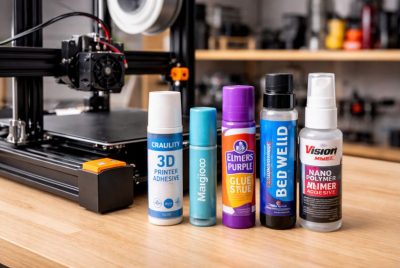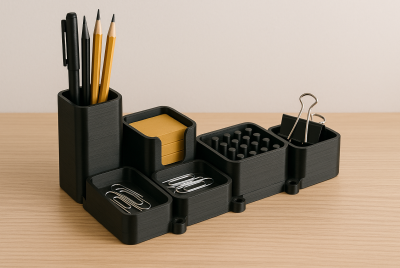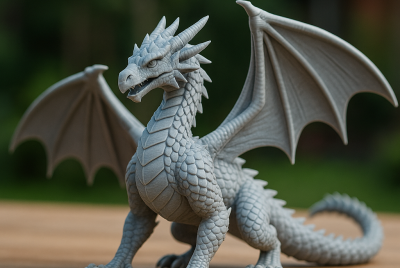Best 3D Printer Nozzle Upgrades for Cleaner Prints
Have you ever set up a print, only to find stringy lines, clogged extrusions, or a messy surface staring back at you hours later? That sinking feeling usually comes down to one tiny part—the 3D printer nozzle. When your nozzle wears out or isn’t designed for the material you’re using, your prints lose their crisp edges and smooth finish. The frustration builds quickly, especially when wasted filament and time keep piling up. The solution is simpler than most people think: upgrading your nozzle. With the right upgrade, you’ll get cleaner layers, fewer clogs, and a more reliable printing experience that makes every project worth the effort.
Why the Right 3D Printer Nozzle Matters
Even though your nozzle is small, it has a big influence on print quality. Hours of labor are frequently ruined by jams, uneven extrusion, or untidy surfaces as it wears down. Consider it to be similar to the tip of a fountain pen: accurate and sharp when brand-new, but unreliable when worn.
Research confirms this. A study on nozzle flow dynamics found that nozzle geometry directly affects pressure, viscosity, and extrusion stability, which all shape the final print quality. Another analysis of nozzle wear in additive manufacturing showed how material choice and long-term use can significantly reduce strength and accuracy in printed parts.
Upgrading your nozzle is one of the simplest, most affordable ways to achieve smoother layers, stronger prints, and more reliable results.
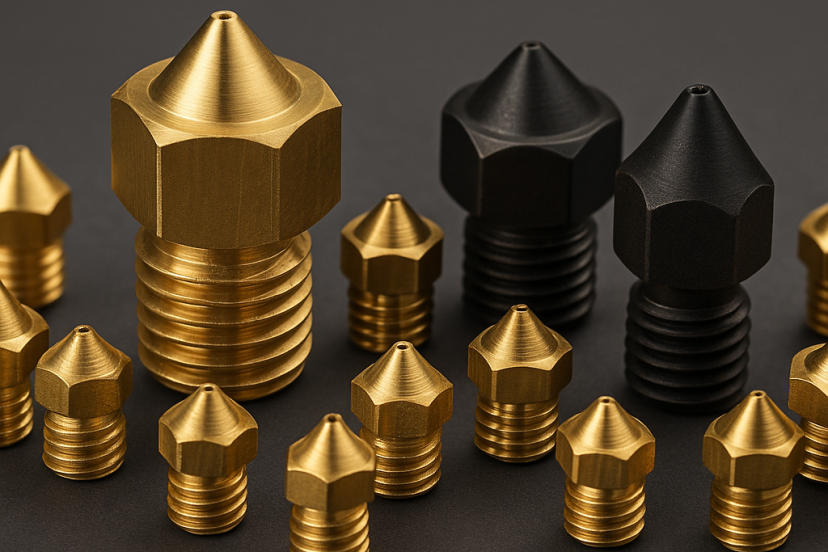
7 Reliable 3D Printer Nozzles for Cleaner Prints
Choosing the right nozzle can feel overwhelming, so I’ve narrowed it down to seven reliable upgrades that deliver cleaner, smoother prints.
1. Creality Brass Nozzles Set
The Creality Brass Nozzles Set is a great option for regular PLA and ABS printing. This set, which is beginner-friendly and comes with many replacements so you’re never caught without a spare, is well-known for its smooth extrusion and simple installation. The primary disadvantage is that using abrasive filaments causes brass nozzles to deteriorate more quickly.
2. Hardened Steel Nozzles (High-Temp Resistant)
If you often work with tougher materials like carbon fiber, wood-filled, or glow-in-the-dark filaments, hardened steel nozzles are the way to go. They are designed to withstand high temperatures and offer long-lasting strength. While they outlast brass by a wide margin, they are slightly less conductive, which can affect heating efficiency.
3. Hardened Stainless Steel Nozzles
For those seeking a balance between toughness and smooth extrusion, hardened stainless steel nozzles are a reliable option. They are resistant to rust and safe for food-contact materials, making them versatile for different types of filaments. However, they are not as wear-resistant as premium options like tungsten carbide.
4. XIFOWE Brass Nozzle Kit with Storage Box
The XIFOWE Brass Nozzle Kit is perfect for hobbyists who like to experiment with different nozzle sizes. It comes neatly packaged in a storage box, making organization easy. Brass nozzles, however, wear down more quickly than other materials, so they may require frequent replacements if you use abrasive filaments.
5. 3D Printer Nozzle Storage Kit
This nozzle storage kit offers a complete set with multiple diameters, giving you flexibility to experiment with different printing styles. It’s a budget-friendly option and a good pick for beginners. That said, the nozzles are brass, so they’re not ideal for printing with abrasive materials.
6. Creality Tungsten Carbide Nozzle
For serious enthusiasts and professionals, the Creality Tungsten Carbide Nozzle is a premium upgrade. It handles abrasive filaments with ease, offers unmatched durability, and can last far longer than brass or steel options. The only real downside is the higher cost, but it pays off with exceptional longevity and print consistency.
7. Stainless Steel Nozzle Pack
This stainless steel pack is a reliable upgrade for anyone who values durability and consistent performance. The nozzles resist rust and come in a multi-pack, which adds convenience for regular users. They strike a good balance between strength and cost, although they are slightly less heat-conductive than brass nozzles.
Product Comparison Table
| Product | Key Feature | Rating | Price |
| Creality Brass Nozzles Set | Affordable brass set for beginners | ⭐⭐⭐⭐☆ | View Product |
| Hardened Steel Nozzles (High-Temp Resistant) | Long-lasting and heat-resistant | ⭐⭐⭐⭐⭐ | View Product |
| Hardened Stainless Steel Nozzles | Corrosion-resistant and versatile | ⭐⭐⭐⭐☆ | View Product |
| XIFOWE Brass Nozzle Kit with Storage Box | Multi-size brass set with case | ⭐⭐⭐⭐☆ | View Product |
| Comgrow 3D Printer Nozzles | Variety pack for flexible printing | ⭐⭐⭐⭐☆ | View Product |
| Creality Tungsten Carbide Nozzle | Premium tungsten carbide for pros | ⭐⭐⭐⭐⭐ | View Product |
| Stainless Steel Nozzle Pack | Durable stainless steel multipack | ⭐⭐⭐⭐☆ | View Product |
Common Problems with Low-Quality or Worn Nozzles
- Clogs: Dust, cheap filament, or residue builds up faster in poor-quality nozzles.
- Worn Tips: Abrasive filaments like carbon fiber grind down soft brass quickly.
- Inconsistent Extrusion: Leads to rough textures and wasted filament.
- Frequent Replacements: Cheap nozzles need replacing more often, costing you more over time.
Tips to Maintain and Extend Nozzle Life
- Clean regularly with a cleaning needle or filament
- Purge before switching materials
- Avoid over-tightening during installation
- Store spares in a dry container
Want to give your setup a creative flair? Check out Steampunk Home Accessories for unique ideas that match perfectly with custom 3D prints.
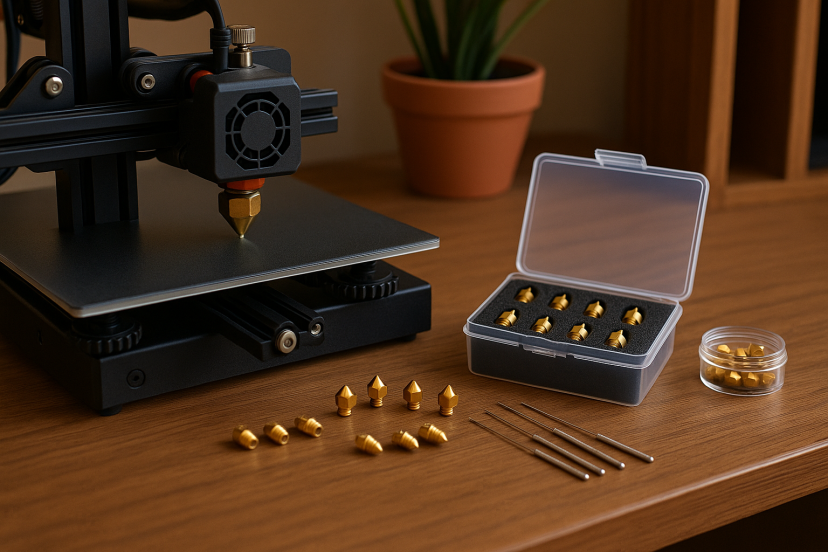
Conclusion
Upgrading your 3D printer nozzle may seem like a small change, but the difference is huge. Better nozzles mean sharper details, smoother finishes, and fewer wasted prints. Whether you choose brass for everyday use, hardened steel for tough filaments, or tungsten carbide for professional reliability, the right nozzle is worth the investment.
FAQs
1. How often should I change my nozzle?
Brass: every 3–6 months. Hardened steel or tungsten: up to a year or more.
2. Which nozzle size is ideal for first-time users?
0.4 mm—it’s the best balance between speed and detail.
3. Can I use one nozzle for everything?
Not ideally. Abrasive filaments will eat through brass quickly.
4. What are the common reasons my nozzle gets clogged?
Dust, moisture, and cheap filament cause most clogs.
5. Are premium nozzles really worth it?
Yes. They save time, reduce waste, and improve quality long-term.


